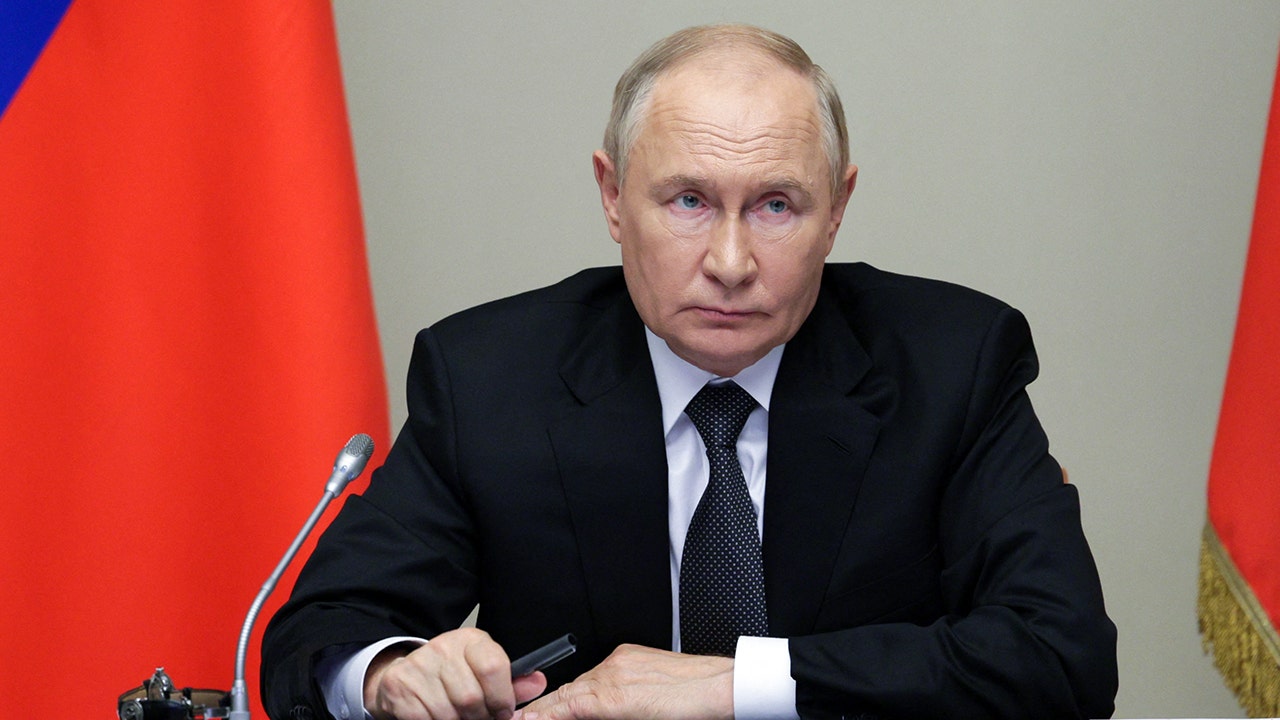World
Russia opens new front in Ukraine war. Is Ukraine losing the war with Russia?
A new surge of US weapons and Russian inability to coordinate ground and air forces could limit Moscow’s advanced.
Blinken announces additional funding for Ukraine ‘Defense Enterprise Fund’
While in Kyiv, Ukraine, Secretary of State Antony Blinken announced an additional $2 billion in aid for Ukraine to develop their “Defense Enterprise Fund.”
A new Russian offensive has clawed back miles of terrain near the key Ukrainian city of Kharkiv, but a surge of U.S. weapons and Russia’s inability to coordinate its ground and air forces make a breakthrough unlikely, according to U.S. officials and military analysts.
Ukrainians remain under threat from Russian drones, missiles and shelling as fighting picks up along a 700-mile front. Ukrainian troops, backed by billions of dollars worth of U.S. weapons, are expected to limit Russian gains. But Kharkiv, Ukraine’s second-largest city, southeast of Kyiv, could face more bombing as Russian artillery draws near.
The view that Russia’s gains remain incremental in the grinding, two-year war of attrition is based on interviews with U.S. and Ukrainian officials, intelligence assessments and military experts.
“The Ukrainians are not in danger of losing, but they’re not winning right now,” said Seth Jones, director of the international security program at the Center for Strategic and International Studies, a Washington think tank. “There are no peace talks, and no interest in them from the Ukrainians. Russia feels it has the initiative.”
The intensified fighting comes as Ukraine has been outgunned, running low on ammunition and waiting for a new $60 billion package of U.S. military aid to take effect.
Ukraine war: Blinken visits Kyiv as Russia ramps up military offensive
Russia seeks a Ukraine buffer zone
Since last week, Russia has advanced about 2 to 5 miles in Ukraine’s northeast, mostly over open terrain. It has yet to hit Ukraine’s first line of defense, according to a U.S. official. The concern, according to the official, who was not authorized to speak publicly, is that the Russian advance could put Kharkiv in range of Russian artillery. In fact, U.S. officials believe Russia is seeking to establish a buffer zone in northeastern Ukraine to prevent cross-border attacks that have targeted Russian cities near the border.
While a breakthrough by Russian forces does not appear likely, Ukrainian morale and manpower have become an issue after months of nonstop fighting, few reinforcements and dwindling supplies of ammunition, the official said. Congress’ delay in providing the $60 billion military aid package has weakened Ukrainian defenses by depleting air defenses needed to stop Russian missile and glide-bomb attacks, the official said.
‘It’s hard, but they’re holding on’: On the ground in Ukraine, the war depends on U.S. weapons
Ammunition is now arriving at the frontlines in Ukraine after the recently approval aid package, the official said. Ukraine has also moved to make more young people eligible to serve, which could provide relief, the official said.
Still, Mykola Bielieskov, a military research fellow at Ukraine’s National Institute for Strategic Studies, said in a WhatsApp message that it was “very difficult to answer” the question of when the new U.S. military aid for Ukraine would make a difference.
In a separate blog post for the Atlantic Council think tank, Bielieskov also wrote last week that while “the renewed presence of Russian troops in northern Ukraine marks a significant escalation in the war,” Russia’s “immediate military goals look to be rather limited.” Bielieskov said that because Russia has concentrated up to 35,000 soldiers on its side of the border, this could change. But he told USA TODAY that any suggestions Russia was close to capturing Kharkiv or on the verge of a military breakthrough went “way too far.”
Phillips P. O’Brien, a professor of strategic security studies at the University of St. Andrews, Scotland, agreed with that assessment. He said that, as of Thursday, after Ukraine’s military sent reinforcements to the area, Russian forces have stopped advancing in northeastern Ukraine.
“Let’s see if they can take Vovchansk, a small town, first,” O’Brien said.
Synchronizing troops, tanks and warplanes
Russia’s struggles to synchronize troops and tanks with warplanes overhead limits its ability to break through Ukraine’s defense, Jones said. Ukraine’s air defense has prevented Russia’s air force from providing the cover its ground forces need for major advances.
Neither Ukraine’s military nor its military intelligence agency returned a request for comment on whether Russia’s activity near Kharkiv represented a major change in the war’s trajectory.
The Institute for the Study of War, a Washington think tank, published a series of maps on Wednesday based on open-source information showing that Russian forces have seized territory in recent days in at least four towns in northeastern Ukraine: Hlyboke, Neskuchne, Starytsya and Vovchansk.
“The tempo of Russian offensive operations in northern Kharkiv Oblast continues to decrease after Russian forces initially seized areas that Ukrainian officials have now confirmed were less defended,” the think tank said in comments accompanying the maps.
Squandered opportunity for landmines
One Ukrainian soldier involved in reconnaissance missions in the Kharkiv region said he expected the Russians to mount a larger offensive push there, and in Ukraine’s neighboring Sumy region, in the coming days.
However, he did not think there was an imminent danger of the city of Kharkiv falling into Russian hands. He said some of the towns currently being contested northeast of Kharkiv suffered from a lack of defensive preparations.
For example, he believed Ukraine squandered an opportunity over the past few months to place landmines and other defensive weapons around Vovchansk and other towns near Kharkiv that could have slowed its enemy’s advance. The soldier requested anonymity because he was not authorized to speak to the media.
The soldier also expressed frustration over U.S. military aid.
He said that since the outbreak of the war more than two years ago, the Americans had provided Ukraine with sufficient weapons to keep them alive and fight back against the Russians − but not enough to help them win the war. The soldier said he had seen no fresh evidence that this has changed, even with the last round of U.S. aid.
Russia’s small gains have come at a huge cost.
Each day, nearly 900 Russian troops are killed or wounded in action, according to an estimate released May 4 by British Defense Intelligence. Since Russia launched its illegal invasion in February 2022, more than 465,000 Russian troops have been killed or wounded, British Intelligence estimates.
The Russian casualty rate is expected to increase over the summer as it presses its offensive. It could surpass 500,000 dead and injured by summer, Jones said.
So far, Russian President Vladimir Putin has been able to squelch domestic resistance by sending troops from Siberia, Central Asia and prison inmates, Jones said. The sons of elites from Moscow and St. Petersburg have thus far been spared.







